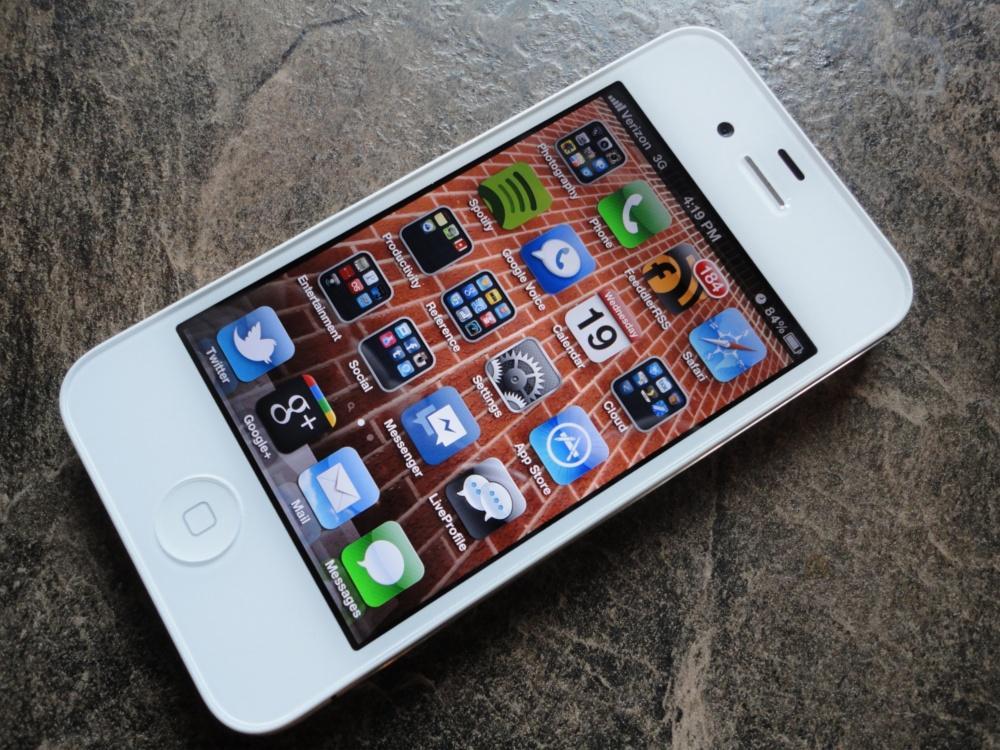
Falling in line with its predecessor, the iPhone 4S is easily one of the best phones we at PhoneDog have ever used. Many were expecting a totally new teardrop design and larger display, and felt letdown when Apple announced an evolutionary update versus the purported revolutionary new phone. Despite large amounts of disappointment following Apple's iPhone announcement just over two weeks ago, the 4S is still a great phone and packs a huge punch in a few key areas.
Since the majority of the improvements are internal, not a lot has changed aesthetically. Apple added a dual-core A5 processor, an advanced lens camera, more storage space, a new antenna design and some unique software functions to the iPhone 4S. As per usual, Apple is offering the iPhone 4S at the starting point of $199 with a two-year agreement, but is now topping out at $399 with the addition of a 64GB capacity. Do the added storage and the few other changes make the iPhone 4S worth the upgrade? Or should you hold out for a next generation Ice Cream Sandwich phone?

As I stated before and I'm sure you already know by now, the iPhone 4S looks nearly identical to its predecessor. Apple introduced a new design with the iPhone 4 last year. Since it garnered a mostly positive response (aside from all the shattered devices and antenna problems), Apple decided to stick with the same design for the 4S.
The device's innards are still sandwiched between two thin sheets of hardened glass, and the device is still the same 9.3mm thick. The power button and 3.5mm headphone jack are found on top; volume buttons and the mute switch are on the left edge and the proprietary 30 pin port, mic and loud speaker are on the bottom. In the upper left corner of the back you will find an 8-megapixel camera with LED flash. And last, but certainly not least, the 3.5-inch LED-backlit IPS Retina Display, the home button, front-facing camera and ear speaker are fitted on the face.
Build quality is exactly what you would expect: excellent. It feels extremely solid and great in the hand. But like before, the excess of glass sheathing the front and back never fails to make me nervous. If nothing else, I was at least hoping Apple would have swapped the glass back for a more durable and shatter-resistant material.
One of the focal points of Apple's keynote on the 4th was software. They were releasing the next version of iOS with the iPhone 4S, which touts over 200 new features. In iOS 5, users were introduced to a revamped notification system called Notification Center, iMessage, Newsstand, deep Twitter integration and a plethora of other software improvements. Overall, these changes are for the better and fix a lot of the outstanding issues I've had with iOS. Even after several months with iOS 5 beta, I'm still finding new features each week.
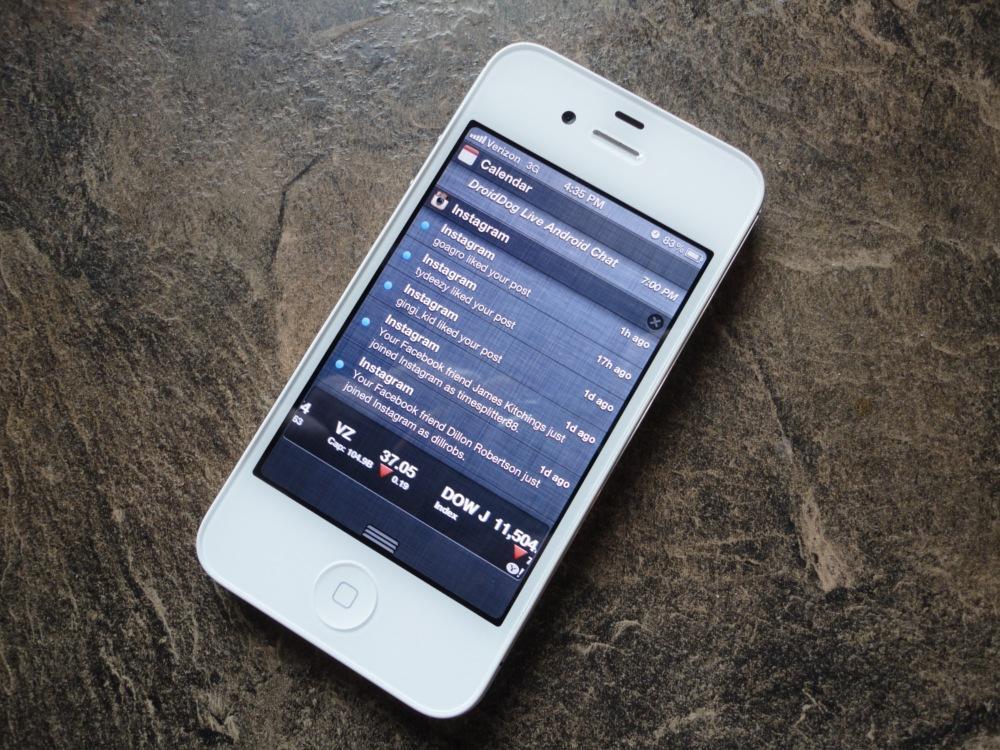
You may recall the antennagate debacle that Apple had on their hands last year with the iPhone 4. If you gripped the phone and bridged the gaps between separate antennas, the phone would unexpectedly lose signal and potentially drop an ongoing call. Apple fixed this with a new antenna design in the CDMA versions of the iPhone 4. On the outside, this is the same antenna design that is featured in the 4S, but the antenna operates little differently. As Phil Schiller explained at the keynote, the antenna "intelligently switches between two antennas to receive and send." This "intelligent switching" is claimed to improve signal and call quality. I have the Verizon iPhone 4S and a CDMA iPhone 4; side by side, the 4S generally had the same signal or one bar better, at best. And I never noticed any notable improvement in call quality, though the ear speaker seems to be a tad louder.
The iPhone is now a world phone. Equipped with both a GSM and CDMA radio, the iPhone can theoretically work in most countries. But make sure you read the fine print before believing you can buy one at full retail and take it to any carrier you please. If you do plan on using this phone with any carrier internationally, you should wait for the unlocked version next month. One feature that we all expected to be missing, but hoped for nonetheless, was 4G. Unfortunately, the iPhone 4S ships in only a 3G variant (for CDMA customers). While it can't tap into Verizon's LTE, it can run on AT&T's HSPA+ (14.4Mbps) networks. For me, 4G isn't a deal breaker. I prefer consistency and strong battery life over blistering speed, so coping with 3G hasn't been terribly hard. Throughout the Charlotte metro area, I've averaged roughly 1.7Mbps on the downlink and just under 1Mbps on the uplink. So network speeds aren't spectacular, but they're not terrible either.
However, I have had some notable network issues with the Verizon variant. The iPhone was constantly roaming through strong Verizon coverage areas. In fact, I was roaming as I was driving past a Verizon tower just this Monday. Even after updating the PRL, the random roaming persisted for roughly another day. It has been about a day and a half since I've noticed any more issues, but I have a feeling they're not entirely gone. Aaron has also experienced some network issues with his CDMA iPhone 4S on Sprint's network, in the form of data connectivity and speed problems. But Sprint's network appears to be the culprit there, as similar issues have been prevalent on other Sprint smartphones he has tested as of late.
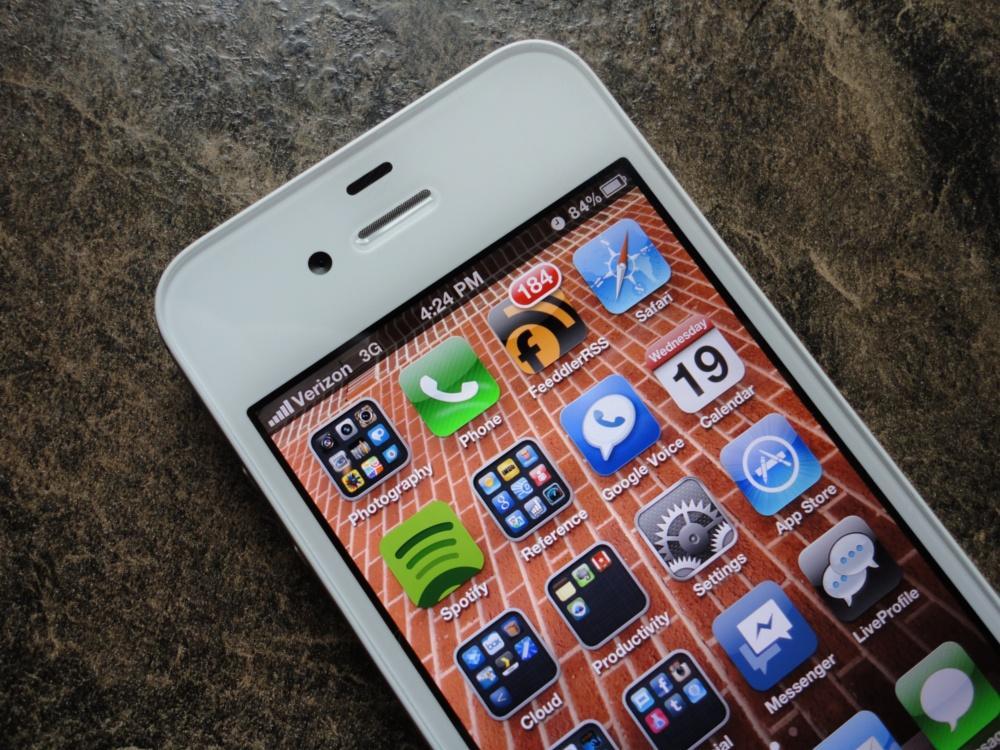
The display, which was the high point of the iPhone 4, is actually a low point for the 4S. Last year, a resolution of 960 by 640 pixels and a ppi of 326 was unheard of. Although it looks just as brilliant as it did when it was first introduced, the competition has, at long last, surpassed the famed "Retina Display" on the iPhone. Colors still pop and it's still one of the clearest displays on the market. But just last night, Samsung announced the Galaxy Nexus, which sports a 4.65-inch HD Super AMOLED display at 720p at roughly 316ppi. Their reason for keeping the display the same size is noble, but 3.5-inches is simply too small for someone with hands my size to use comfortably.
One of the major internal improvements for the iPhone 4S is the processor. As if the A4 was not fast enough for a handset, Apple decided to bump the iPhone's chipset to the A5, which debuted in the iPad 2. The A5 in the iPhone is clocked at 800MHz. For average users, there will be few differences in performance between the iPhone 4 and the 4S, despite claims that it is two times faster. Where the A5 shines the most is in gaming, where the dual-core graphics really take off. Graphics are said to be up to seven times faster with the A5 and make in-game transitions and animations buttery smooth. Even with some obvious advantages, I still feel the A5 is a little much for the iPhone, which was plenty fast before.
Battery life has always been a strong feature in the iPhone's favor, and the 4S doesn't disappoint. With up to 10 hours of video playback and eight hours of talk time on 3G, it still outlasts much of the competition. In my personal use, I've been able to squeeze just over a day of use out of it. I usually unplug it around 10 AM and don't need to plug it in again until I wake up the next morning (it also charges extremely fast, usually in just over an hour from completely dead). That's more than I can say for anything else I've used over the past two years. But it's worth noting that the 4S has not matched the battery life of the iPhone 4. My guess is the dual-core processor may be the culprit, as my 4S has consistently fallen roughly six hours short of the battery life on my CDMA iPhone 4. Nonetheless, getting a full day of use is nothing to complain about nowadays.
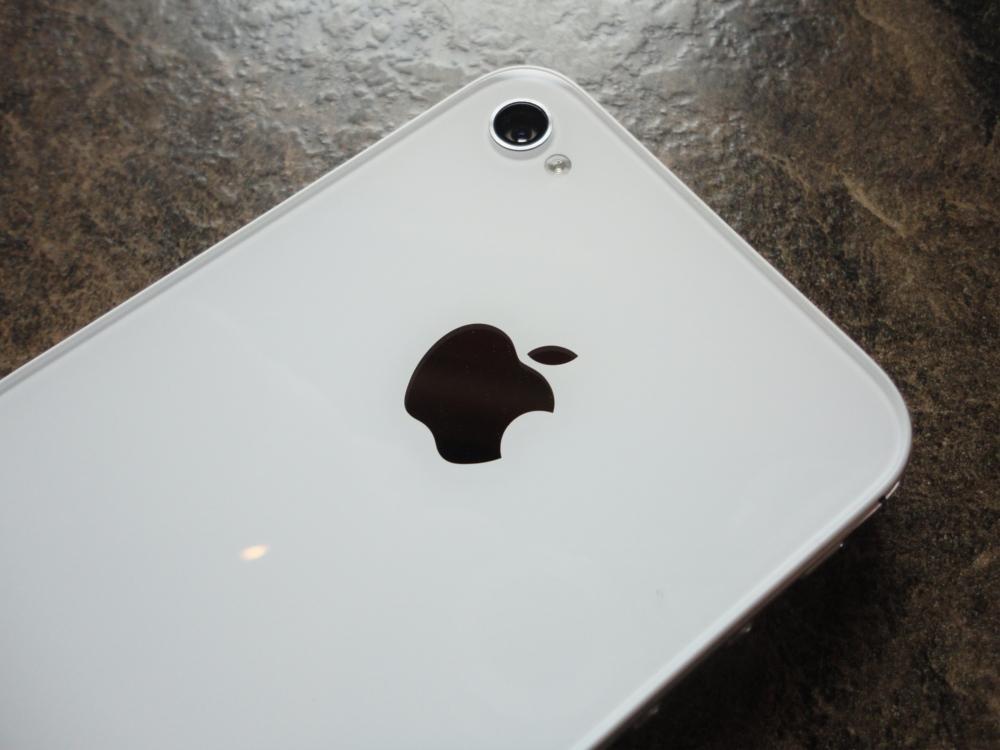
The biggest improvement in the iPhone 4S, hardware-wise, is the camera. Apple not only bumped it to 8-megapixels, but they added an advanced lens with "five precision elements to shape incoming light, which makes the entire image sharper." Stills taken with the 4S have been phenomenal (for a phone, at least). It captures super fine details, reproduces accurate, natural colors and maintains a solid white balance without over exposing the shot. I actually took a shot with the iPhone and liked it so much, I used it as my desktop background. (See for yourself.) And the iPhone is now capable of recording video at 1080p at 30 frames per second. It produces some of the best looking video I've ever seen from a phone, with realistic colors and very stable white balance. It has already squared off with several SLRs around the web, and has stood its ground quite well.
Finally, what Apple believes to be the halo of this launch, is Siri. Siri is an artificially intelligent, voice controlled assistant. Simply hold the home key and wait for the beep, speak your command or ask your question and wait for Siri to respond. Siri can do everything from set alarms and schedule appointments to answer reference questions and make you laugh. Personally, I didn't find Siri as important or impressive as Apple was making it sound. A lot of the function of Siri has been available for some time now (and Siri itself was available as an app in App Store before Apple bought it), and I found myself using it more for entertainment than anything. Talking to your phone is just as awkward as talking on a Bluetooth headset in public. Using dictation mode while your hands are full is quite useful, but again, voice to text input is nothing new.
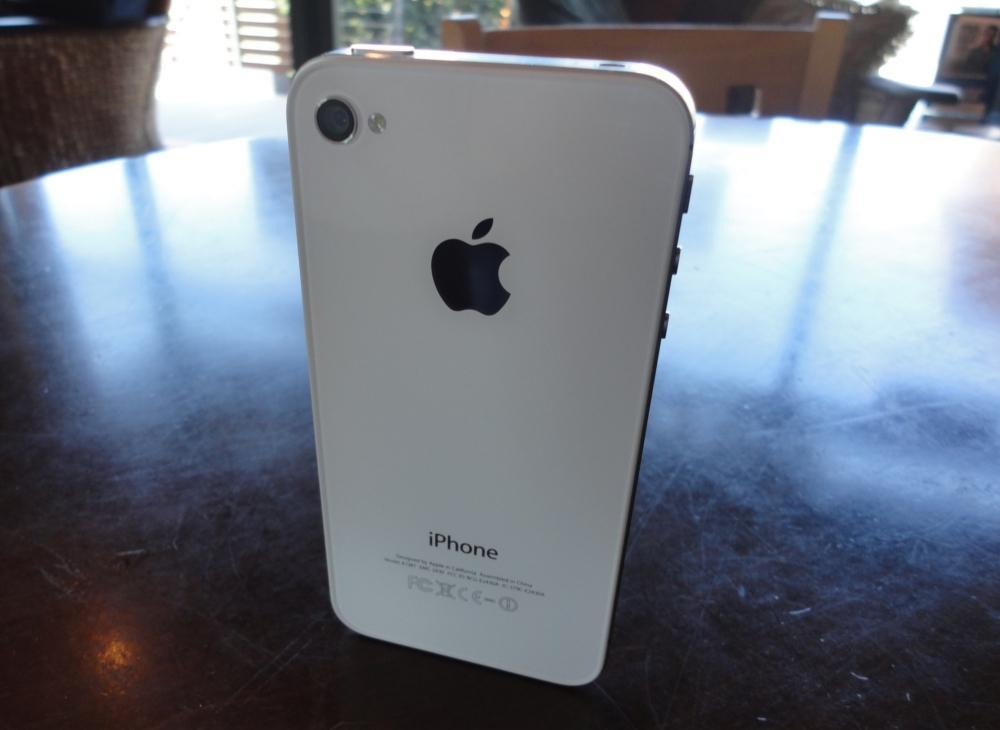
When it comes down to it, the iPhone 4S is everything it needed to be, nothing more. Nothing is mind-blowing or anything we haven't seen before. But Apple focused on some of the weak points of the iPhone 4, like the antenna, and improved upon them. They even took one of the strongest features of the iPhone 4 – the camera, which has surpassed every other camera as the most popular shooter on Flickr – and made it even better.
Is it a worthy upgrade to the iPhone 4? Well, I wouldn't say it isn't worthy. But I'm not so sure I would upgrade from the iPhone 4 to the 4S, knowing that another phone may come in the summer of 2012. If you are on an iPhone 3G or 3GS, the 4S will be a huge improvement and is certainly worth considering. Quite honestly, though, the 4S is facing some seriously stiff competition in light of the DROID RAZR and Galaxy Nexus announcements yesterday. The iPhone 4S currently runs for $199.99, $299.99 or $399.99 for a 16, 32 or 64GB capacity, respectively, and can be purchased on AT&T, Verizon and Sprint. Unlocked versions starting at $649.99 will be available in November.
What's Good: Choice in storage capacities; amazing camera; solid design and build quality; strong signal and call quality; decent battery life; "world phone."
What's Bad: The display is too small for comfortable use; glass on the front and back has proven to be fragile in the past; relatively expensive at $199.99 to $399.99 with a two year agreement.
The Verdict: The iPhone 4S is a subtle upgrade from the iPhone 4. The camera is absolutely fantastic and the phone's performance is near perfection. But with so few improvements over the old model, it's hard to justify spending north of $200 and signing a two-year contract when the next iPhone may come in just seven months. And the offerings from some Android manufacturers may knock the iPhone from the limelight very soon.